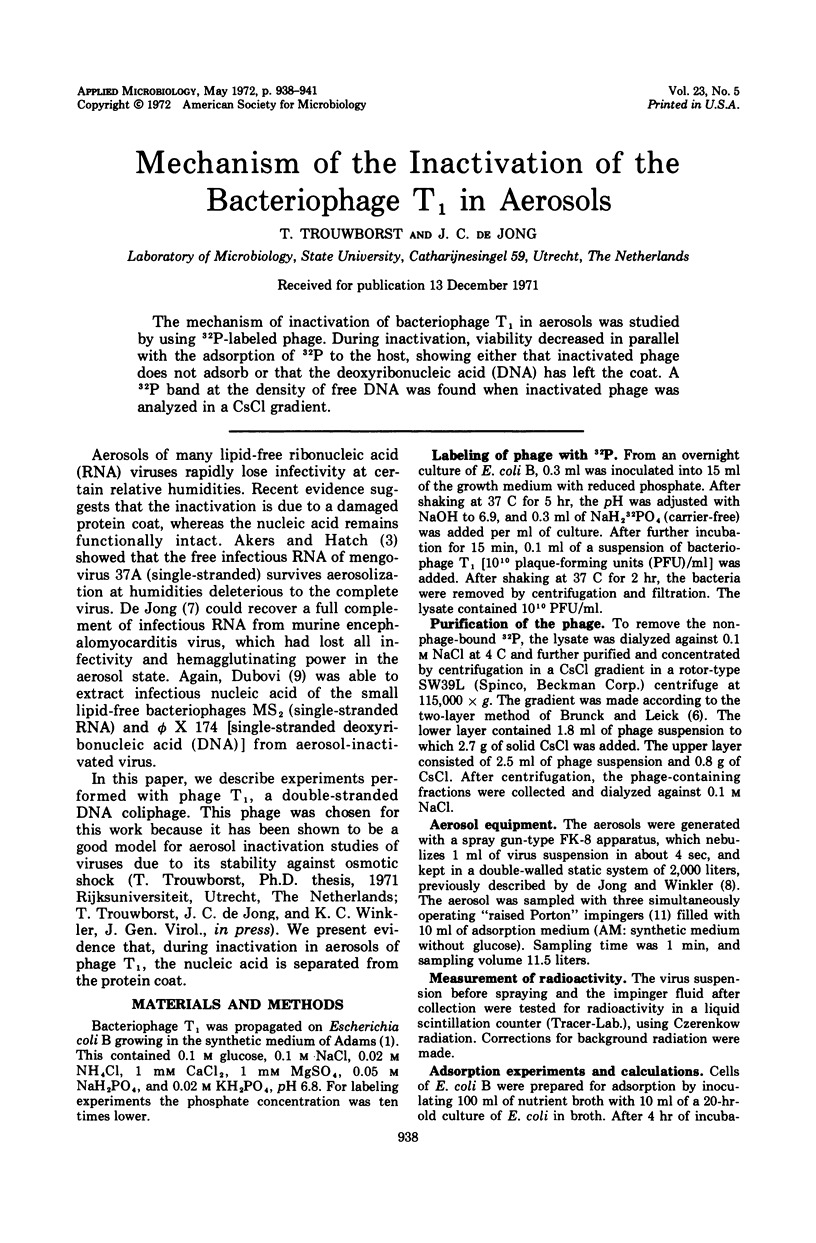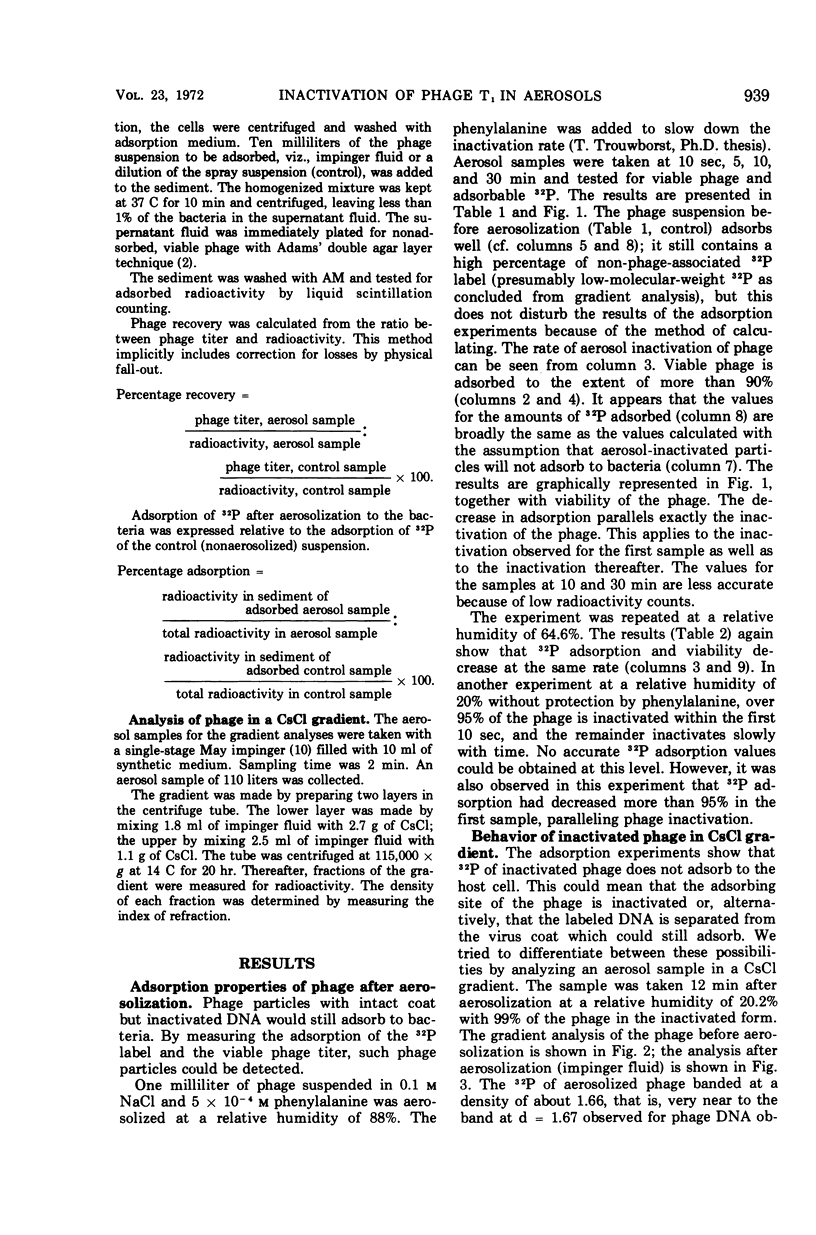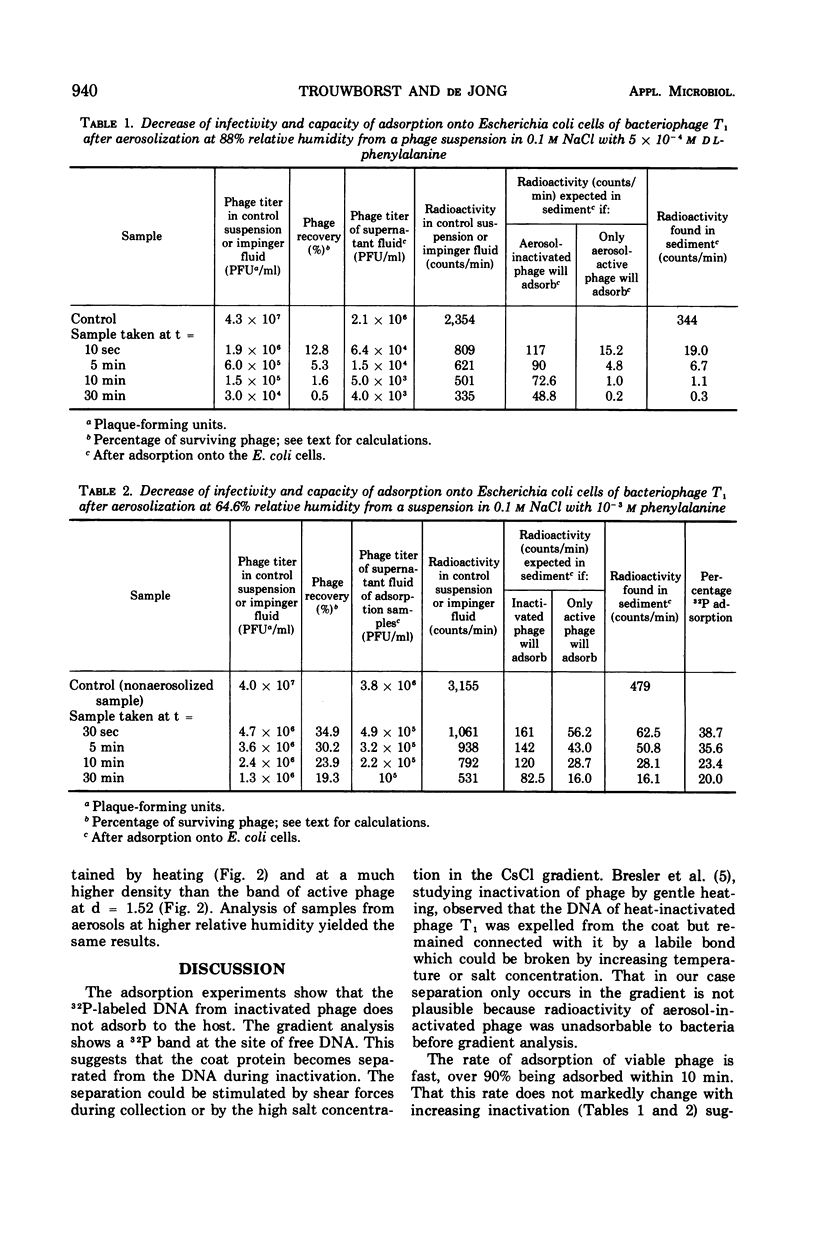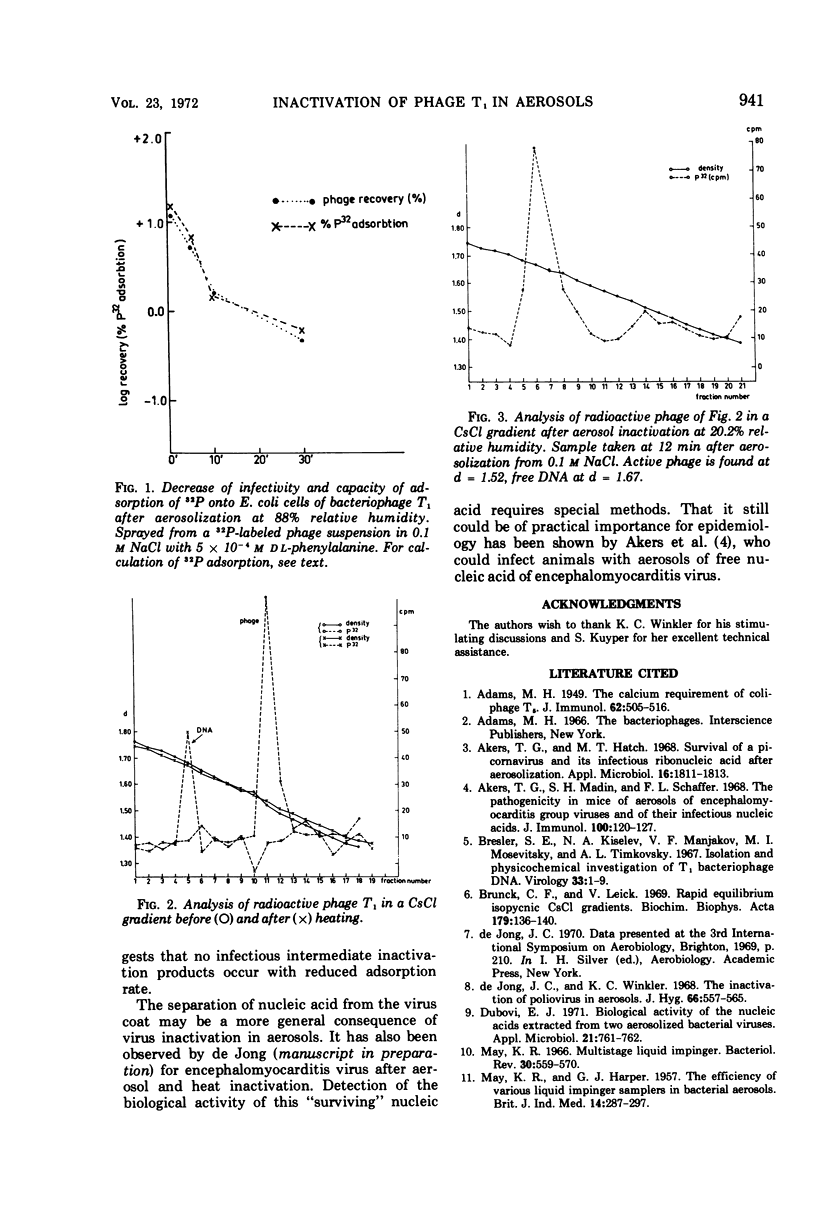Abstract
The mechanism of inactivation of bacteriophage T1 in aerosols was studied by using 32P-labeled phage. During inactivation, viability decreased in parallel with the adsorption of 32P to the host, showing either that inactivated phage does not adsorb or that the deoxyribonucleic acid (DNA) has left the coat. A 32P band at the density of free DNA was found when inactivated phage was analyzed in a CsCl gradient.
Full text
PDF



Selected References
These references are in PubMed. This may not be the complete list of references from this article.
- Akers T. G., Hatch M. T. Survival of a picornavirus and its infectious ribonucleic acid after aerosolization. Appl Microbiol. 1968 Nov;16(11):1811–1813. doi: 10.1128/am.16.11.1811-1813.1968. [DOI] [PMC free article] [PubMed] [Google Scholar]
- Akers T. G., Madin S. H., Schaffer F. L. The pathogenicity in mice of aerosols of encephalomyocarditis group viruses or their infectious nucleic acids. J Immunol. 1968 Jan;100(1):120–127. [PubMed] [Google Scholar]
- Bresler S. E., Kiselev N. A., Manjakov V. F., Mosevitsky M. I., Timkovsky A. L. Isolation and physicochemical investigation of T1 bacteriophage DNA. Virology. 1967 Sep;33(1):1–9. doi: 10.1016/0042-6822(67)90087-6. [DOI] [PubMed] [Google Scholar]
- Brunk C. F., Leick V. Rapid equilibrium isopycnic CsC1 gradients. Biochim Biophys Acta. 1969 Mar 18;179(1):136–144. doi: 10.1016/0005-2787(69)90129-4. [DOI] [PubMed] [Google Scholar]
- Dubovi E. J. Biological activity of the nucleic acids extracted from two aerosolized bacterial viruses. Appl Microbiol. 1971 Apr;21(4):761–762. doi: 10.1128/am.21.4.761-762.1971. [DOI] [PMC free article] [PubMed] [Google Scholar]
- MAY K. R., HARPER G. J. The efficiency of various liquid impinger samplers in bacterial aerosols. Br J Ind Med. 1957 Oct;14(4):287–297. doi: 10.1136/oem.14.4.287. [DOI] [PMC free article] [PubMed] [Google Scholar]
- May K. R. Multistage liquid impinger. Bacteriol Rev. 1966 Sep;30(3):559–570. doi: 10.1128/br.30.3.559-570.1966. [DOI] [PMC free article] [PubMed] [Google Scholar]
- de Jong J. C., Winkler K. C. The inactivation of poliovirus in aerosols. J Hyg (Lond) 1968 Dec;66(4):557–565. doi: 10.1017/s0022172400028308. [DOI] [PMC free article] [PubMed] [Google Scholar]


